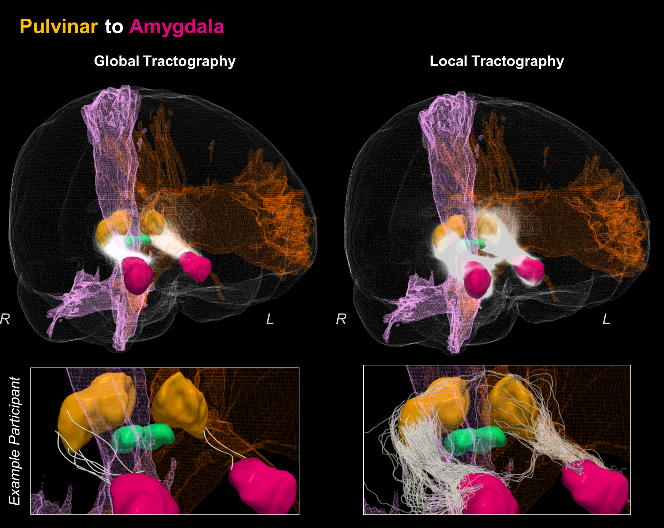Researchers at the UQ's Queensland Brain Institute have confirmed the existence of an elusive pathway in the brain that enables some blind people to detect and respond to visual stimuli they do not ‘see’.
If a person’s primary visual cortex is damaged due to injury or a stroke, vision loss can occur because the brain can no longer receive input through this critical pathway.
Nevertheless, some individuals with a damaged visual cortex experience a phenomenon called ‘blindsight’: they report an inability to see, yet are able to navigate and react to sudden movements or facial emotions correctly and above chance.
How the brain is able to do this has been a long-standing mystery that has driven over a decade of research by the Queensland Brain Institute’s Dr Marta Garrido.
According to Dr Garrido, one possible explanation is that an independent pathway exists in the brain that bypasses the visual cortex and instead carries information from the eyes to the thalamus and from there straight to the amygdala, a brain region responsible for processing emotional information.
Such a ‘neural shortcut’ would allow rapid threat detection independent of visual perception, she says. However, there has been very little evidence for such a shortcut and, as such, it has remained controversial.
“This subcortical route had never been found in primates before when we started this project,” she said.
“The only direct evidence was in rodents, so that was part of the challenge.”
Long-debated brain shortcut confirmed
Now, in a new study published in eLife, Dr Garrido and her colleagues found that the proposed pathway does indeed exist in humans with normal vision that links the retina of the eye through two subcortical regions to the amygdala, hence bypassing the cortex.
They did this by looking at the MRI brain scans of 622 people with functioning visual cortices and analysing ‘diffusion imaging’ data, which allows neural connections to be examined 3-dimensionally.
“Amazingly, we were able to reconstruct this pathway in every person.”

While the imaging demonstrated the existence of the structure, the researchers were still not certain it had a direct impact on behaviour.
Dr Garrido and her PhD student Jessica McFadyen then looked at functional magnetic resonating imaging (fMRI) data from a facial recognition task to see if there was a link. The task measured the brain’s response to viewing faces with emotions such as anger, fear, happiness, neutrality, and sadness.
Stronger white matter connections in the subcortical pathway associated with better fearful face recognition would be evidence of this link.
“We saw that people who had greater connectivity in this pathway were better at recognising fear in people’s faces, and that this was specific to fear, but not other negative emotions like sadness or anger.”
“The denser this pathway to the amygdala was, the better people were recognising fear. So that was very exciting; we showed that it exists, and has a bearing on behaviour.”
The research has important implications for settling a long-standing scientific debate about how the brain processes visual information and, by extension, explaining biological phenomena such as blindsight.
Why the brain has alternate visual shortcuts
“This paper settles the debate, but it also opens other questions about why the brain evolved to have alternative pathways that go parallel to each other,” Dr Garrido said.
“One possibility I think is redundancy: it is useful to have redundancy mechanisms in the brain, so if one thing fails, for example in the case of stroke, then we still have an ability to process things that are really, really important, like danger and navigation.
“You ask someone with blindsight how they know where to navigate to, and they will tell you, I don’t know, I just had a feeling. And understanding where that feeling comes from is fascinating.”
Dr Garrido and her colleagues are now planning to extend this and other studies to people with blindsight to see if their subcortical pathways are indeed strengthened due to a loss of the cortical pathway.
The research was published in eLife and supported by a University of Queensland Fellowship, an ARC Australian Laureate Fellowship, the ARC Centre of Excellence for Integrative Brain Function, and an ARC Australian Postgraduate Award. Data were provided by the Human Connectome Project.



